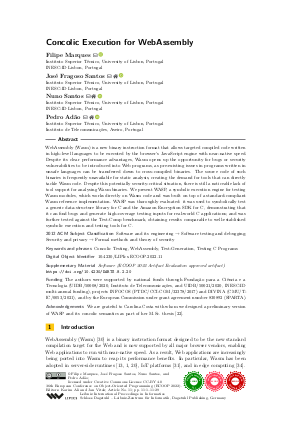@InProceedings{marques_et_al:LIPIcs.ECOOP.2022.11,
author = {Marques, Filipe and Fragoso Santos, Jos\'{e} and Santos, Nuno and Ad\~{a}o, Pedro},
title = {{Concolic Execution for WebAssembly}},
booktitle = {36th European Conference on Object-Oriented Programming (ECOOP 2022)},
pages = {11:1--11:29},
series = {Leibniz International Proceedings in Informatics (LIPIcs)},
ISBN = {978-3-95977-225-9},
ISSN = {1868-8969},
year = {2022},
volume = {222},
editor = {Ali, Karim and Vitek, Jan},
publisher = {Schloss Dagstuhl -- Leibniz-Zentrum f{\"u}r Informatik},
address = {Dagstuhl, Germany},
URL = {https://drops.dagstuhl.de/entities/document/10.4230/LIPIcs.ECOOP.2022.11},
URN = {urn:nbn:de:0030-drops-162394},
doi = {10.4230/LIPIcs.ECOOP.2022.11},
annote = {Keywords: Concolic Testing, WebAssembly, Test-Generation, Testing C Programs}
}

 Creative Commons Attribution 4.0 International license
Creative Commons Attribution 4.0 International license























































